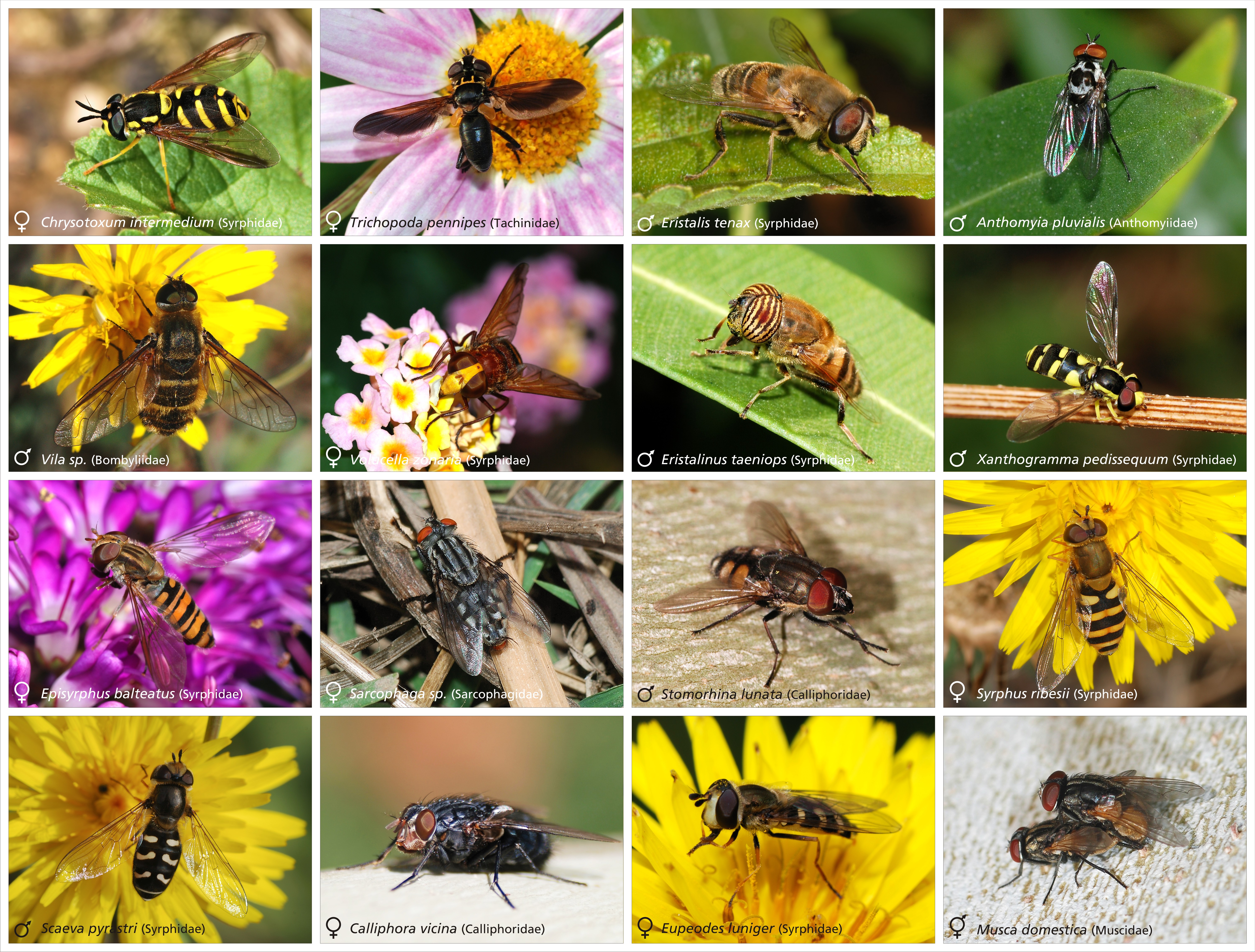m (5 revisions: re-import from WB, including edit history) |
m (+ translate tags) |
||
| Line 1: | Line 1: | ||
| + | <noinclude><translate></noinclude> | ||
{{Species id | {{Species id | ||
| common_name = Flies | | common_name = Flies | ||
| Line 10: | Line 11: | ||
It is a large order, containing an estimated 240,000 species of mosquitoes, gnats, midges and others, although under half of these (about 120,000 species) have been described. It is one of the major insect orders both in terms of ecological and human (medical and economic) importance. The Diptera, in particular the mosquitoes (Culicidae), are of great importance as disease transmitters, acting as vectors for malaria, dengue, West Nile virus, yellow fever and other infectious diseases. | It is a large order, containing an estimated 240,000 species of mosquitoes, gnats, midges and others, although under half of these (about 120,000 species) have been described. It is one of the major insect orders both in terms of ecological and human (medical and economic) importance. The Diptera, in particular the mosquitoes (Culicidae), are of great importance as disease transmitters, acting as vectors for malaria, dengue, West Nile virus, yellow fever and other infectious diseases. | ||
}} | }} | ||
| − | |||
[[Category:Adventist Youth Honors Answer Book|{{SUBPAGENAME}}]] | [[Category:Adventist Youth Honors Answer Book|{{SUBPAGENAME}}]] | ||
| + | <noinclude></translate></noinclude> | ||
Revision as of 20:52, 16 January 2019
Flies (Diptera)
Order: Diptera
Description: The presence of a single pair of wings distinguishes true flies from other insects with "fly" in their name, such as mayflies, dragonflies, damselflies, butterflies, etc. It is a large order, containing an estimated 240,000 species of mosquitoes, gnats, midges and others, although under half of these (about 120,000 species) have been described. It is one of the major insect orders both in terms of ecological and human (medical and economic) importance. The Diptera, in particular the mosquitoes (Culicidae), are of great importance as disease transmitters, acting as vectors for malaria, dengue, West Nile virus, yellow fever and other infectious diseases.

